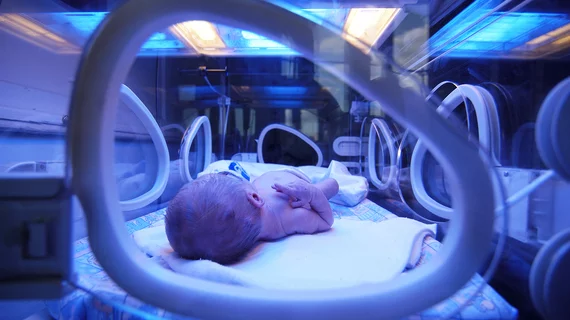Premature births can be predicted at 23 weeks using ultrasound
After more than 20 years of research between University of Illinois Chicago and University of Illinois Urbana-Champaign, a new method for measuring a woman’s risk of delivering a baby prematurely has been developed.
By using quantitative ultrasound to measure microstructural changes in the cervix, clinicians can accurately predict the risk of a premature birth as early as 23 weeks into a pregnancy.The research is published in the American Journal of Obstetrics & Gynecology Maternal Fetal Medicine. [1]
Currently, assessing the risk of a premature birth—which occurs in 10%-15% of pregnancies, according to the study authors—requires some guesswork based on symptoms and a patient’s previous history. Now, with ultrasound, providers will be able to make a more grounded assessment, regardless of a patient’s symptoms or previous pregnancies.
“Today, clinicians wait for signs and symptoms of a preterm birth,” study lead author Barbara McFarlin, a professor emeritus of nursing at the University of Illinois Chicago, said in a statement. “Our technique would be helpful in making decisions based on the tissue and not just on symptoms.”
The study was conducted on 429 women who gave birth without induction at the University of Illinois Hospital, all of whom were given quantitative ultrasounds prior to birth. However, instead of simply analyzing the pictures, researchers read radio frequency data from the scans to assess tissue characteristics.
The women in the study were assessed for their risk based on two separate hospital visits where sonograms were performed. The risk assessment took into consideration a patient’s medical history as well as the results of the ultrasounds.
Based on symptoms and patient history alone, the best predictive model for a premature pregnancy had an estimated receiver operating characteristic area under the curve of 0.56 ± 0.03. However, after the two visits where quantitative ultrasound was utilized, the predictive model showed a significant improvement (likelihood ratio test, p < 0.01), with the area under the curve reaching 0.69 ± 0.03.
Ultrasounds earlier in pregnancy also showed a modest improvement over a clinical examination of history and symptoms (0.63 ± 0.03). Notably, this improvement was seen as early as 23 weeks. Because the method allows for premature births to be more accurately predicted, it may reduce the number of premature babies and save lives, the researchers said, as clinicians will now have a larger window to administer treatments and monitor a fetus.
A method 22 years in the making
The quest to develop a better way to predict premature births began when McFarlin was working as a sonographer and midwife. Noticing there were differences in the appearance of the cervix in women who went on to deliver preterm, she became interested in researching what this could mean when she was a PhD student at the University of Illinois Chicago in 2001.
She partnered with University of Illinois Urbana-Champaign professor Bill O’Brien, who was studying ways to use quantitative ultrasound data in healthcare. Together, their research discovered that changes in the cervix could predict a premature birth, and quantitative ultrasound waves are able to measure those changes.
This study found that using quantitative ultrasound works. However, more research is being done to further improve its accuracy.
The full study can be found at the link below.

